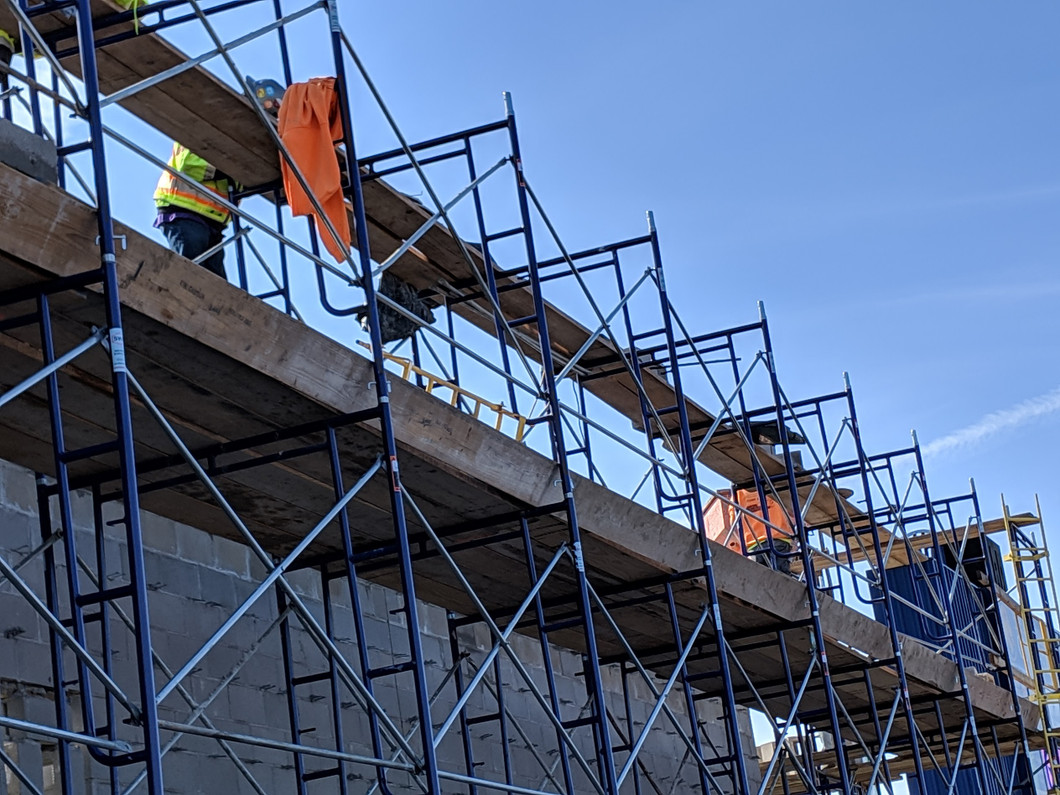Introduction to Scaffolding in Construction
Scaffolding is an essential part of the construction process, providing the necessary support for workers and materials when building, repairing, or maintaining structures. Whether you're working on a small home renovation or a large-scale commercial development, scaffolding ensures that the job is done efficiently and safely. But what exactly is scaffolding, and why is it so vital in construction?
What is Scaffolding?
Scaffolding is a temporary framework used to elevate workers and materials during construction. It allows access to areas of a structure that are too high or difficult to reach otherwise. From building facades to structural frameworks, scaffolding provides stability and access across a wide range of construction activities.
Without scaffolding, tasks such as bricklaying, plastering, painting, or installing windows would be much harder, and in many cases, dangerous. The right scaffolding ensures that workers can perform their tasks effectively while keeping safety a priority.
Why is Scaffolding Important in Construction?
The significance of scaffolding in construction cannot be overstated. Not only does it provide access to elevated areas, but it also supports multiple workers and materials simultaneously. This makes construction more efficient, allowing work to progress faster and more safely than relying on ladders or other methods.
Another key benefit of scaffolding is its ability to improve safety on the job site. Construction work can be risky, especially at heights, but scaffolding, when properly erected and maintained, minimizes accidents by offering secure platforms for workers to stand, move, and transport materials.
Types of Scaffolding Used in Construction
There are several types of scaffolding used in construction, each designed to meet the needs of different projects. Below are some of the most common types:
1. Single Scaffolding
Single scaffolding, or putlog scaffolding, is typically used for lighter construction tasks, such as plastering or painting. It consists of a single row of vertical supports, with horizontal ledgers fixed to the structure being worked on. This simple structure is sufficient for small to medium-sized projects.
2. Double Scaffolding
Double scaffolding offers more stability and is often used for stonework or heavier tasks. It features two rows of vertical supports, making it sturdier and safer, especially when working with dense materials. This is a preferred choice for larger projects that require robust support.
3. Cantilever Scaffolding
Cantilever scaffolding is ideal for situations where it's difficult to erect scaffolding on the ground, such as on busy streets or alongside tall buildings. The framework is supported by "needles" (horizontal beams) extending out from the structure, eliminating the need for ground-level support.
4. Suspended Scaffolding
Suspended scaffolding is commonly used for tasks on high-rise buildings, like window cleaning or exterior painting. This system is suspended from the roof by ropes or chains, allowing workers to raise or lower the platform as needed. It's particularly useful for jobs that require frequent access to different heights.
5. Trestle Scaffolding
Trestle scaffolding uses tripods or ladders to support the working platform, making it portable and easy to set up. It’s mainly used for indoor work or for smaller construction projects that don’t require significant height, such as ceiling repairs or painting.
6. Steel Scaffolding
For heavy-duty construction projects, steel scaffolding is the go-to option. Made from durable steel tubes and couplers, this type of scaffolding offers unmatched strength and stability, making it ideal for long-term projects and large commercial structures. Its ability to withstand heavy loads makes it a popular choice for skyscrapers, bridges, and other large-scale developments.
Conclusion
Scaffolding is an integral part of the construction industry, providing the access, safety, and support necessary to complete projects efficiently and securely. With various types of scaffolding available to suit different tasks, choosing the right one is essential to the success of your project. Whether working on a small home build or a large commercial construction, scaffolding ensures that you can get the job done safely and effectively, no matter how high you need to go.
Recent Posts
-
Top 5 Myths About Scaffolding – Busted!
Don’t Let These Common Misconceptions Slow Your Project Down At Southwest Scaffolding, we hear …Jun 30th 2025 -
What Happens to Old Scaffolding?
A Peek Into Recycling, Reuse, and Creative Upcycling Ideas Introduction: Scaffolding doesn’t l …Jun 28th 2025 -
Why Locking Pins and Couplers Matter More Than You Think
When most people think about scaffolding, they picture the platforms, frames, and guardrails—b …Jun 16th 2025




